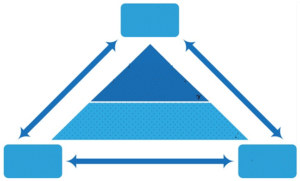Employing the EPEC Hierarchy of Conditions (Version II) To Evaluate the Effectiveness of Using Synchronous Technologies with Multi-Location Student Cohorts in the Tertiary Education Setting
 As e-learning maintains its popularity worldwide, and university enrolments continue to rise, online tertiary level coursework is increasingly being designed for groups of distributed learners, as opposed to individual students. Many institutions struggle with incorporating all facets of online learning and teaching capabilities with the range and variety of software tools available to them. This study used the EPEC Hierarchy of Conditions (ease of use, psychologically safe environment, e-learning self-efficacy, and competence) for E-Learning/E-Teaching Competence (Version II) to investigate the effectiveness of an online synchronous platform to train pre-service teachers studying in groups at multiple distance locations called satellite campuses. The study included 58 pre-service teachers: 14 who were online using individual computers and 44 joining online, sitting physically together in groups, at various locations. Students completed a survey at the conclusion of the coursework and data were analyzed using a mixed methods approach.
As e-learning maintains its popularity worldwide, and university enrolments continue to rise, online tertiary level coursework is increasingly being designed for groups of distributed learners, as opposed to individual students. Many institutions struggle with incorporating all facets of online learning and teaching capabilities with the range and variety of software tools available to them. This study used the EPEC Hierarchy of Conditions (ease of use, psychologically safe environment, e-learning self-efficacy, and competence) for E-Learning/E-Teaching Competence (Version II) to investigate the effectiveness of an online synchronous platform to train pre-service teachers studying in groups at multiple distance locations called satellite campuses. The study included 58 pre-service teachers: 14 who were online using individual computers and 44 joining online, sitting physically together in groups, at various locations. Students completed a survey at the conclusion of the coursework and data were analyzed using a mixed methods approach.
This study’s findings support the EPEC model applied in this context, which holds that success with e-learning and e-teaching is dependent on four preconditions: 1) ease of use, 2) psychologically safe environment, 3) e-learning self-efficacy, and 4) competency. However, the results also suggest two other factors that impact the success of the online learning experience when working with various sized groups. The study demonstrates that the effectiveness of a multi-location group model may not be dependent only on the EPEC preconditions but also the effectiveness of the instructor support present and the appropriateness of the tool being implemented. This has led to the revised EPEC Hierarchy of Conditions for E-Learning/E-Teaching Competence (Version III).







